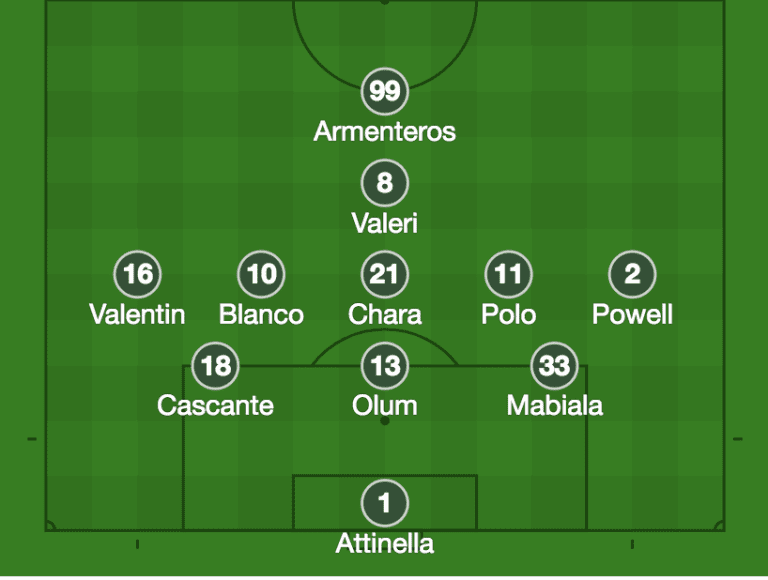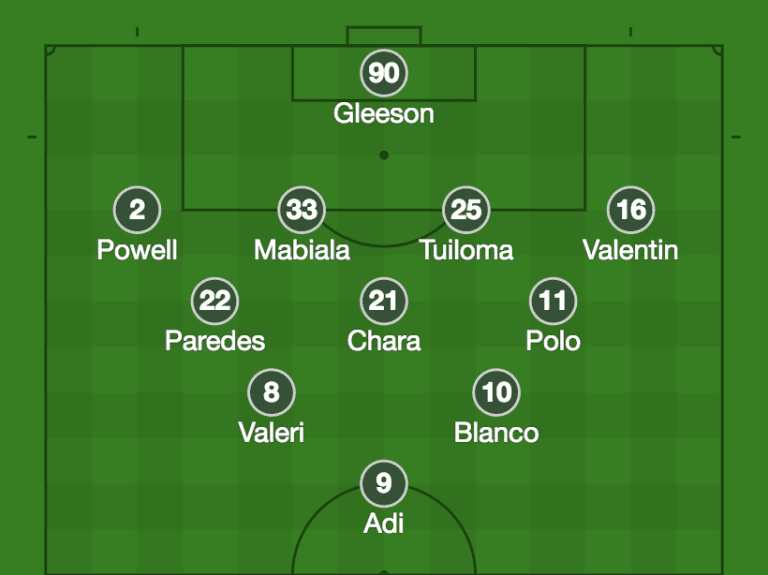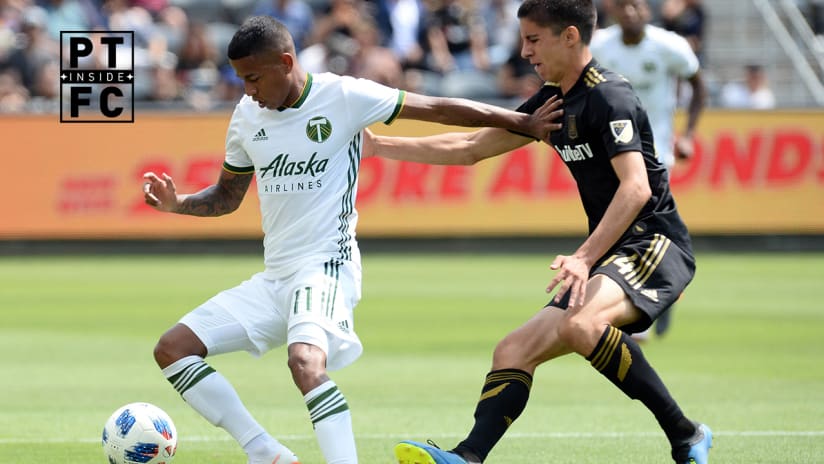There is a subtext to every lineup choice, and every tactic a coach employs on the field. Beyond scoring and preventing goals, there is an intent that can’t be communicated by a player’s name or position alone. In that dearth of communication, there’s uncertainty as to what, exactly, a coach is trying to do.
Consider the recent evolution of Giovanni Savarese’s choices in central midfield, which included Sebastián Blanco and Andy Polo playing above Diego Chara in a 5-3-2 formation this past weekend at Los Angeles FC.

Timbers lineups at LAFC, July 16, 2018
Leaving aside the skills of players like Blanco and Polo, it was only a few weeks ago that, with Polo at the 2018 World Cup with Peru, the Timbers were using Chara with Cristhian Paredes above Lawrence Olum in a much more defensive three. Before that, Polo had begun to establish himself as a consistent starter, but for the most part, the team’s midfield always features two players who projected as more defensive or box-to-box options: Chara and Paredes.

Timbers lineups vs. Minnesota, April 14, 2018
The subtext of that choice has been clear ever since Savarese started using those combinations in the team’s third game, against FC Dallas. Coming off an 0-2-0 start and a 4-0 loss at the New York Red Bulls, the team shifted to a back-to-basics approach, one that installed goal prevention a top priority. Blanco, Diego Valeri and the team’s forward of choice (either Fanendo Adi or Samuel Armenteros) would have to carry the attack almost by themselves, while at the other end of the field, the subtext of starting three deep central midfielders screamed "first things first."
If that was the fine print message back then, what would the subtext of starting Blanco and Polo in central midfield be now? Blanco clearly has the skillset to play the position, but to this point in his Portland career, he’s been used exclusively in more attacking roles: as a winger, or an attacking midfielder. Polo, meanwhile, arrived in Portland as an wide attacker or forward but, since preseason, has been used almost exclusively as an option in the middle. What is the implication of having Polo and Blanco – two players who strengths are more in possession and attacking play – as opposed to, say, Parades and Chara in those box-to-box roles?
It all dovetails, to a certain extent, with what we talked about last week in this space – about becoming the hunter, predator, or whatever other aggressive metaphor you want to evoke – but it also looks at the general trend of the season, and where you want your team to be once the games start mattering most. Although Savarese always talks about the need to focus on the next opponent and treat each game as a final, there is also a recognition that the team must continue to evolve, with the focal point of that evolution being the desire to forge the best team possible over the course of the season.
When the Portland Timbers reach the last games of the season, what kind of team do they want to be? Or, seen through a different lens, what types of things does the team want to be able to do? Going back to his days at the helm of the New York Cosmos, Savarese was lauded for his combination of in-the-moment pragmatism and style that led to a versatile approach. Now here in Portland, how does he develop a squad that has those same virtues?
He develops it by building on what has worked, but you don’t take note of the success you’ve had since April and say, “Well, I guess this is who we are.” You look at the talents on your squad and ask, "If the team keeps working, what can the group become come October, November and, if all goes well, one game in December?" You look at players like Blanco and Polo and, while recognizing how they’ve succeeded, thus far, ask what’s the best way to employ them to get the team where it needs to be.
Would the team get to its apex by seeing Polo as merely a wide or high attacking option? Or by seeing Blanco through the lens of his 2017 role? Four months ago, those questions would have gotten one set of answers, but now, what about these new, central midfield roles? Are those the paths to creating the best versions of the Portland Timbers’ 2018 selves?
Possibly. After all, you can never be totally sure about how a team will need to adjust two or three months from now. But if the Timbers were going to build on what was so successful in spring – if they were going to add layers that would allow them to control play against San Jose, instill a note of caution in Los Angeles FC, and project them as favorites for their next MLS match, this Saturday against Montreal (8pm PT, FOX 12 PLUS) – they would need to keep adding to their game. They would need to play midfields that made them less reliant on counter-attacking soccer. They would need to envision the next version of themselves.
That, as much as anything, is the subtext to what we’re seeing now. Of course, the team is making choices that will give them their best chance to win against Los Angeles FC, but they’re also conscious of their potential. The selections Savarese is making not only reflect what the team can do in the present but also what he wants the team to be capable of in the future. The message, beneath the first XI choices and the formational approach, is that the Timbers still have room for growth.












